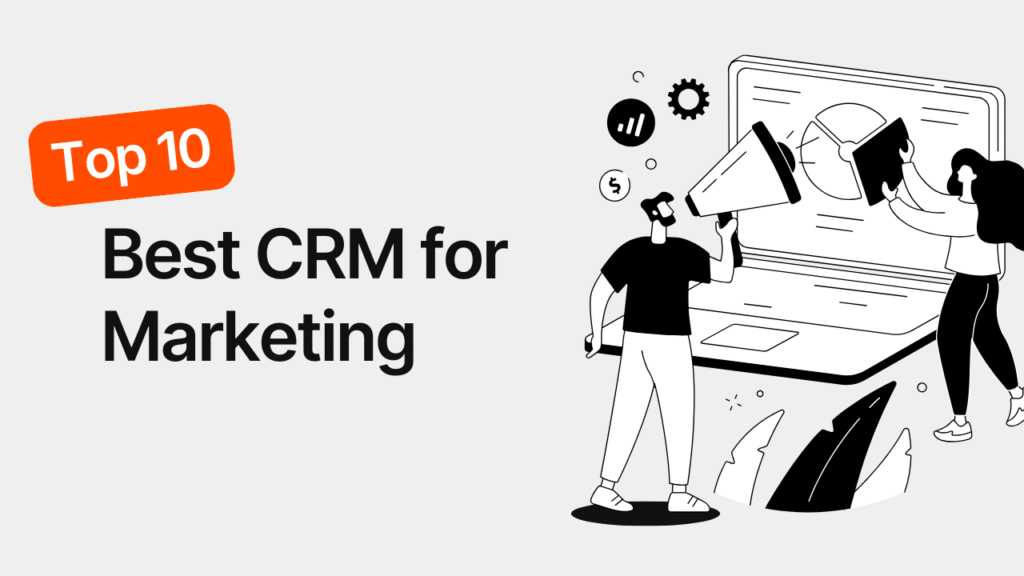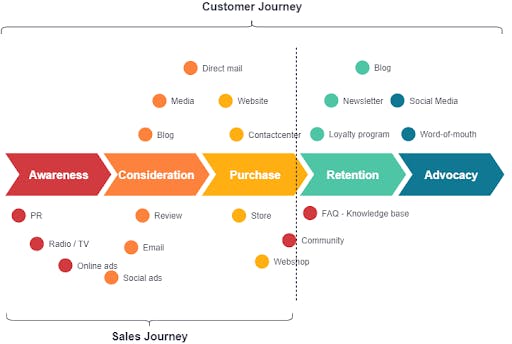
The world of customer relationship management (CRM) is constantly evolving. What was cutting-edge yesterday might be considered outdated tomorrow. For small businesses, staying ahead of the curve in this dynamic landscape is crucial for success. This article dives deep into the small business CRM trends expected to dominate in 2025, providing actionable insights and strategies to help you thrive in the years to come. We’ll explore the technologies, approaches, and shifts in customer behavior that will shape how small businesses interact with their customers.
Understanding the Importance of CRM for Small Businesses
Before we delve into the future, let’s briefly revisit why CRM is so vital for small businesses. In essence, CRM is more than just software; it’s a strategy. It’s about building and nurturing relationships with your customers. For a small business, every customer interaction counts. CRM helps you:
- Centralize Customer Data: Keep all customer information in one accessible place.
- Improve Customer Service: Provide personalized and efficient support.
- Boost Sales: Identify and capitalize on sales opportunities.
- Enhance Marketing Efforts: Target your marketing campaigns effectively.
- Increase Customer Loyalty: Build stronger relationships and retain customers.
Without a solid CRM strategy, small businesses risk losing valuable customers, missing out on sales opportunities, and struggling to scale their operations. The trends we’ll discuss are designed to help you avoid these pitfalls and unlock your business’s full potential.
Trend 1: AI-Powered CRM and Automation
Artificial intelligence (AI) is no longer a futuristic concept; it’s a present-day reality, and its impact on CRM is profound. In 2025, we can expect AI to be even more deeply integrated into CRM systems, driving automation and providing intelligent insights. This trend is arguably the most significant, transforming how businesses manage customer interactions. Here’s what you should anticipate:
AI-Driven Chatbots and Virtual Assistants
Chatbots are already a common sight, but in 2025, they will become much more sophisticated. Expect AI-powered chatbots to handle a wider range of customer inquiries, providing instant support and freeing up your human agents to focus on more complex issues. These chatbots will understand natural language, anticipate customer needs, and even personalize responses based on individual customer profiles. Virtual assistants will also play a key role, automating tasks such as scheduling appointments, sending follow-up emails, and updating customer records.
Predictive Analytics for Sales and Marketing
AI’s predictive capabilities will be invaluable for sales and marketing teams. CRM systems will analyze vast amounts of data to predict customer behavior, identify potential leads, and recommend the most effective marketing strategies. This means you can proactively reach out to customers who are likely to make a purchase, personalize your marketing messages, and optimize your campaigns for maximum ROI. Think of it as having a crystal ball that helps you anticipate customer needs.
Automated Lead Scoring and Qualification
AI will streamline the lead qualification process, saving your sales team valuable time and resources. By analyzing lead data, AI can automatically score leads based on their likelihood of converting into customers. This allows your sales team to prioritize the most promising leads, ensuring they focus their efforts where they’re most likely to succeed. This automation significantly improves sales efficiency and reduces wasted time.
Personalized Customer Experiences
AI will enable truly personalized customer experiences. CRM systems will use AI to understand each customer’s preferences, purchase history, and behavior. This information will be used to tailor every interaction, from website content and product recommendations to email marketing and customer service interactions. The goal is to make each customer feel understood and valued, leading to increased loyalty and satisfaction.
Trend 2: Hyper-Personalization and Customer Segmentation
The days of one-size-fits-all marketing are fading fast. In 2025, hyper-personalization will be the norm. This means going beyond basic segmentation and tailoring every aspect of the customer experience to the individual. This trend is driven by the increasing availability of customer data and the growing demand for personalized interactions. Here’s what to consider:
Granular Customer Segmentation
Forget broad demographics; in 2025, you’ll need to segment your customers based on their behavior, preferences, and needs. This requires a deep understanding of your customers, which can be achieved through data analysis and customer feedback. The more granular your segmentation, the more effectively you can target your marketing efforts and personalize your customer interactions. It’s about understanding the nuances of each customer segment.
Personalized Content and Communication
Customers expect content and communication that is relevant to them. This means tailoring your website content, email marketing, and social media posts to each customer segment. Use dynamic content that changes based on the customer’s profile, and personalize your email subject lines to grab their attention. The goal is to make each customer feel like you’re speaking directly to them.
Product Recommendations Based on Individual Preferences
Leverage your CRM data to recommend products and services that are relevant to each customer’s individual preferences and purchase history. This can be done through personalized product recommendations on your website, in your email marketing, and even during customer service interactions. This increases the likelihood of a sale and enhances the customer experience.
Dynamic Pricing and Offers
In the future, pricing will become more dynamic. CRM systems will analyze customer data to determine the optimal price for each customer. This might involve offering discounts based on purchase history, loyalty, or even real-time market conditions. Similarly, personalized offers will be common, providing customers with deals that are relevant to their needs and preferences. This is about making the customer feel that they are getting the best possible value.
Trend 3: Mobile-First CRM and Enhanced Accessibility
Mobile devices have become an integral part of our lives, and CRM is no exception. In 2025, we’ll see a continued shift towards mobile-first CRM, with a focus on accessibility and ease of use. This trend reflects the growing importance of mobile devices for both customers and businesses. Expect these developments:
Mobile CRM Apps for On-the-Go Access
Mobile CRM apps will become even more powerful and feature-rich, providing sales and customer service teams with access to all the information they need, wherever they are. These apps will allow users to manage contacts, track leads, update customer records, and communicate with customers, all from their smartphones or tablets. This mobile accessibility is crucial for staying connected and responsive.
Integration with Mobile Messaging Apps
Customers increasingly prefer to communicate through mobile messaging apps like WhatsApp, Facebook Messenger, and SMS. CRM systems will integrate seamlessly with these platforms, allowing businesses to provide customer service, send marketing messages, and facilitate sales conversations through the channels customers prefer. This integration ensures that you can reach your customers where they are most comfortable.
Voice-Activated CRM
Voice assistants like Siri and Alexa will be integrated into CRM systems, allowing users to access information and perform tasks using voice commands. This will improve efficiency and make CRM more accessible, especially for users who are on the go. Imagine being able to update a customer record or check a sales report simply by speaking into your phone.
Offline Access and Synchronization
Mobile CRM apps will offer improved offline access, allowing users to access and update customer data even without an internet connection. This is crucial for sales teams who spend a lot of time in the field. The app will then synchronize the data when an internet connection is available, ensuring that all information is up-to-date.
Trend 4: Data Privacy and Security Enhancements
With increasing data breaches and privacy concerns, data privacy and security will be paramount in 2025. CRM systems will need to prioritize security to protect customer data and maintain trust. This trend reflects the growing importance of data privacy regulations and customer expectations. Here’s what you should expect:
Advanced Data Encryption and Security Protocols
CRM systems will implement advanced data encryption and security protocols to protect customer data from unauthorized access. This includes encryption at rest and in transit, as well as robust authentication and authorization mechanisms. The goal is to make it extremely difficult for hackers to access sensitive customer information.
Compliance with Data Privacy Regulations
CRM systems will need to comply with all relevant data privacy regulations, such as GDPR, CCPA, and others. This includes obtaining customer consent for data collection, providing customers with the right to access and delete their data, and implementing data minimization practices. Failure to comply with these regulations can result in significant fines and damage to your reputation.
Data Governance and Management Tools
CRM systems will provide robust data governance and management tools, allowing businesses to control how customer data is collected, stored, and used. This includes tools for data cleansing, data quality monitoring, and data access control. These tools ensure that your data is accurate, reliable, and used ethically.
Focus on Transparency and Customer Control
Customers want to know how their data is being used and have control over their personal information. CRM systems will provide tools for customers to manage their privacy settings, access their data, and opt-out of marketing communications. Transparency and customer control are essential for building trust and maintaining strong customer relationships.
Trend 5: Integration with Other Business Systems
CRM systems don’t exist in a vacuum. In 2025, we’ll see increased integration between CRM and other business systems, such as:
Integration with Marketing Automation Platforms
Seamless integration between CRM and marketing automation platforms will be essential for creating personalized marketing campaigns and tracking their effectiveness. This integration allows you to segment your audience based on CRM data, personalize your marketing messages, and track the results of your campaigns in real-time. This helps to ensure that your marketing efforts are targeted and effective.
Integration with E-commerce Platforms
CRM systems will integrate with e-commerce platforms to provide a unified view of the customer journey, from browsing to purchase to post-sale support. This integration allows you to track customer behavior on your website, personalize product recommendations, and provide seamless customer service. This helps to create a more cohesive and satisfying customer experience.
Integration with Accounting and Finance Systems
Integration with accounting and finance systems will streamline the sales process and improve financial reporting. This integration allows you to track sales, manage invoices, and generate financial reports directly from your CRM system. This helps to improve efficiency and reduce errors.
Open APIs and Customization Options
CRM systems will offer open APIs and customization options, allowing businesses to integrate them with a wide range of other business systems. This flexibility is essential for creating a CRM system that meets the specific needs of your business. This also allows businesses to tailor their CRM to their unique workflows and processes.
How to Prepare Your Small Business for These Trends
The future of CRM is exciting, but it requires preparation. Here’s how your small business can prepare for the trends we’ve discussed:
Assess Your Current CRM Capabilities
Before you start implementing new technologies, assess your current CRM capabilities. Identify your strengths and weaknesses, and determine what areas need improvement. This assessment will help you prioritize your efforts and make informed decisions about which trends to adopt.
Invest in AI-Powered CRM Solutions
Explore AI-powered CRM solutions that can automate tasks, provide intelligent insights, and personalize customer interactions. Look for solutions that offer features such as AI-driven chatbots, predictive analytics, and automated lead scoring. Investing in these technologies will give you a significant competitive advantage.
Prioritize Data Privacy and Security
Implement robust data privacy and security measures to protect customer data and comply with data privacy regulations. This includes using encryption, implementing strong authentication protocols, and obtaining customer consent for data collection. Data security is not just a technical requirement; it is a matter of customer trust.
Focus on Customer Experience
Make customer experience your top priority. Personalize your interactions, provide excellent customer service, and build strong relationships with your customers. The more satisfied your customers are, the more likely they are to remain loyal and recommend your business to others. A focus on customer experience is essential for long-term success.
Embrace Mobile-First Strategies
Ensure your CRM system is mobile-friendly and accessible. Provide your sales and customer service teams with mobile CRM apps that allow them to access information and perform tasks on the go. Mobile accessibility is crucial for staying connected and responsive.
Stay Informed and Adaptable
The CRM landscape is constantly evolving. Stay informed about the latest trends and technologies, and be prepared to adapt your strategies as needed. Attend industry events, read industry publications, and network with other business owners. The ability to adapt to change is essential for long-term success.
Conclusion
The future of CRM for small businesses is bright. By embracing AI, hyper-personalization, mobile-first strategies, data privacy enhancements, and integrations, you can build stronger customer relationships, boost sales, and achieve sustainable growth. The trends we’ve discussed will shape the way small businesses interact with their customers. By preparing for these trends, you can position your business for success in 2025 and beyond. Embrace the future of CRM and unlock the full potential of your customer relationships.
The key takeaway is this: CRM is not just a software solution; it’s a customer-centric philosophy. By focusing on understanding your customers, providing personalized experiences, and leveraging the latest technologies, you can create a thriving business. The future is now, and small businesses that adapt and embrace these trends will be the ones that flourish.


